Ansys Rocky DEM | Attributes and Installation Guide
DEM (Digital Elevation Model) quickly and accurately simulates the flow behavior of bulk materials with complex particle shapes and size distributions.
DEM (Digital Elevation Model) quickly and accurately simulates the flow behavior of bulk materials with complex particle shapes and size distributions.
Industries all over the world use Ansys Rocky DEM’s Tools to improve their transfer chutes, mills, feeders, vibrate tumblers, and mitigate external effects such as discrete breakage.
Discover Ansys Rocky DEM core features, specific industry applications, simulation of multiple breakage types, and integrative capabilities with Ansys Software. In addition, we have provided supplemental resources, FAQ guides, and installation requirements, including a step-by-step guide for installing Rocky DEM within the assets below.
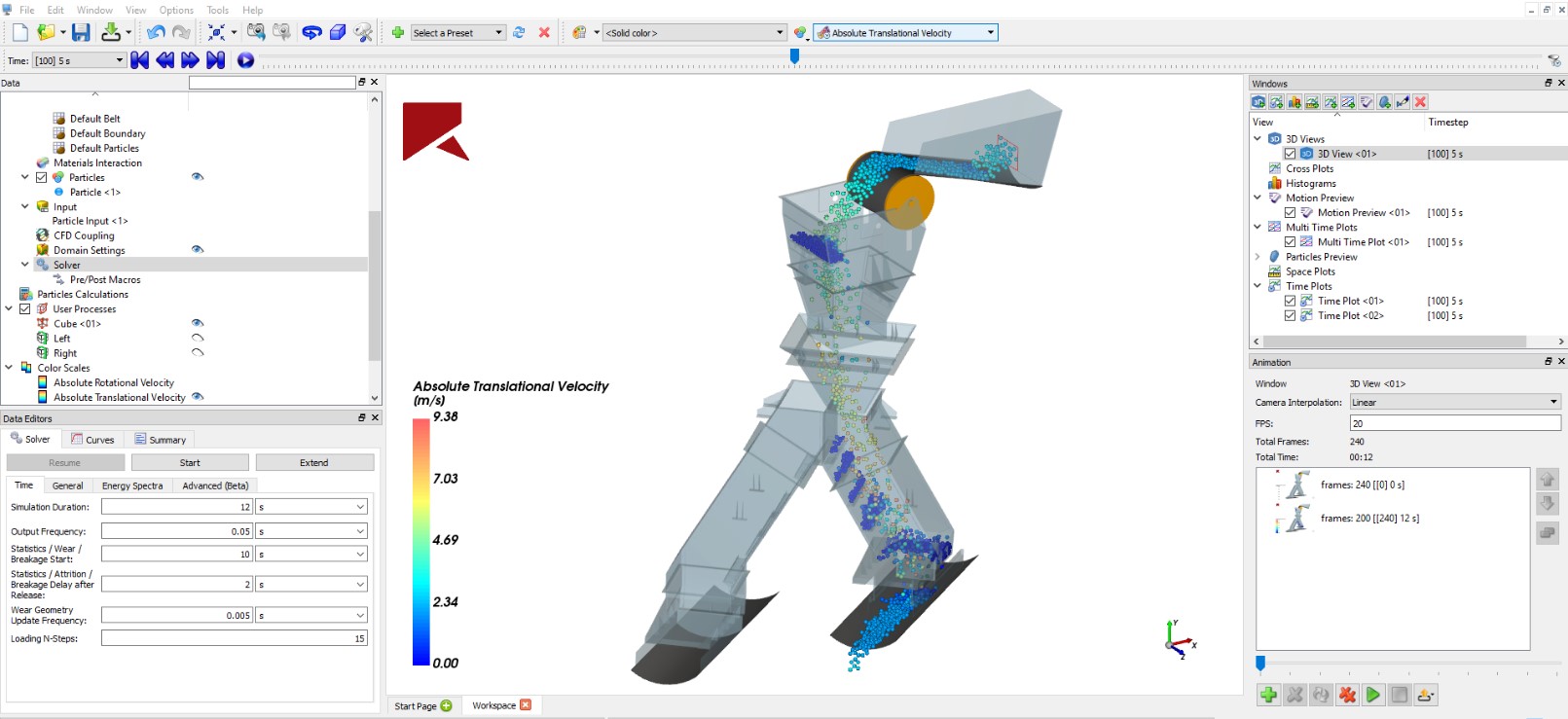
The high-fidelity particle simulation program is known as Ansys Rocky DEM. At it’s core, the program mimics the flow behavior of particles with complicated particle forms and size distributions fast and precisely.
In order to efficiently analyze and evaluate particle movement, ESSS and Ansys partnered in April 2021 to create Ansys Rocky, a discrete element modeling (DEM) simulation program.
The Multi-GPU solver, replicating genuine non-spherical particle morphologies, enables capabilities to simulate particle breakage and flexible fibers. In addition, including full integration with ANSYS simulation software, along with other third-party integration sets.
Only with Rocky DEM is it possible to use the processing capabilities of multiple GPU cards. This capacity upgrade rapidly speeds up simulations and manages larger amounts of data more efficiently.
Large-scale DEM simulations involving millions of particles typically require enormous quantities of hardware memory. Simulator performance can vary greatly, and CPU memory can be rather expensive.
The maximum number of particles that may be processed by a single CPU or GPU is still constrained by the memory available to it.
Ansys Rocky DEM’s multi-GPU solver, however, gets around this memory limitation. This is achieved by effectively allocating and controlling the pooled memory of two or more GPU cards on a single motherboard.
For example, Rocky 4.5’s multi-GPU solver technology readily enables the simulation of 200 million particles in a cyclone separator. Fundamentally, Rocky software’s multi-GPU capabilities empower innovative design. That is, through enabling incredibly high particle counts that were previously impossible.
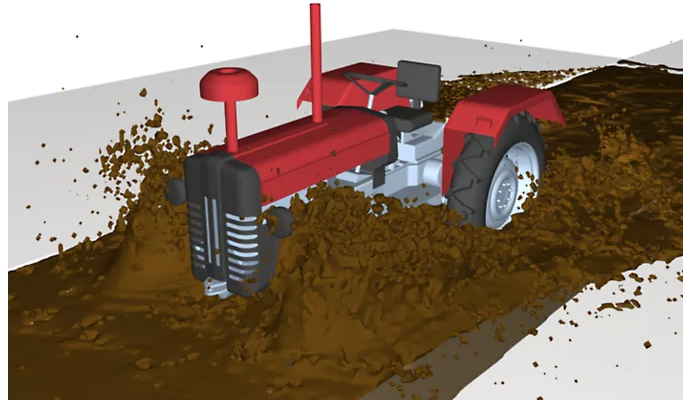
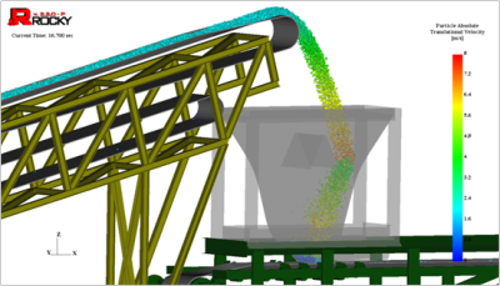
By defining both spherical and genuinely non-spherical particle shapes, Ansys Rocky DEM enables engineers to mimic a system with real particle sizes and shapes.
To make your own special particle sets, designers can combine various form, size, flexibility, and adhesion combinations.
In fact, engineers can utilize Rocky’s basic shapes right out of the box. Additionally, users can define and import your own unique shapes or even model any shape. Including, flexible or hard fibers and shells.
Rocky also permits the assembly of various particles to create new, complicated shapes. That is, thanks to the Particle Assembly concept.
Set up coupled simulations with Ansys Fluent to model the dynamics of a large number of fibers, including behaviors like flexibility, deformation, and inter-fiber contact as well as the impact of fluids on fibers.
Two-dimensional surfaces are joined to form an empty container with a thickness that you choose, like a bottle or box, which is how accessible 3D things are formed. The mass of a shell particle is substantially lower than that of a solid particle with a same form since they have no internal volume.
By providing as many translations, rotations, vibrations, swinging, crushing, and free-body motions as you require, DEM gives you the flexibility to construct complex geometry movements.
Additionally, without the use of any external motion tools, Rocky’s completely integrated motion kernel supports coupled geometric motions directly within the software.
Therefore, Rocky DEM can meet all of your sophisticated motion requirements. Whether you want to specify precise motions or allow your geometry components to move freely. In reaction to outside factors like particle interactions and gravity, Rocky can accurately assess and model.
Rocky features a two-way coupling with the Ansys Motion tool for more intricate multibody motion models. The new possibilities with this connection are further elaborated on below.
The Multi-GPU solver, replicating genuine non-spherical particle morphologies, enables capabilities to simulate particle breakage and flexible fibers. In addition, including full integration with ANSYS simulation software, along with other third-party integration sets.
Slurries and other solid-liquid free-surface flows can be rapidly employed in industrial applications. Fundamentally, this is due to the native Smoothed Particles Hydrodynamic SPH-DEM linked solver kernel. The solution, which is native to both multiple GPUs and multiple CPUs, can also account for heat transfer.
This has cross-industry relevance and application, including heat transfer between fluids, particles, barriers, and more. Moreover, Rocky closely examines the hydrodynamic effect on particles. In particular, concerning issues with high solid content and free surface flows.
These factors are automatically taken into account using Rocky’s mesh-free method. As seen in the accompanied image, exhibiting animation from simulation of slurry mill equipment. The SPH-DEM coupling provides an efficient simulation approach for slurry flows.
Other practical use cases, for example, include rapid simulation of iron ores in a ball mill. The slurry pooling phenomenon is modeled using Rocky’s embedded SPH (Beta) and DEM coupled solver. Additional integrations with Ansys Fluent Meshing is also available.
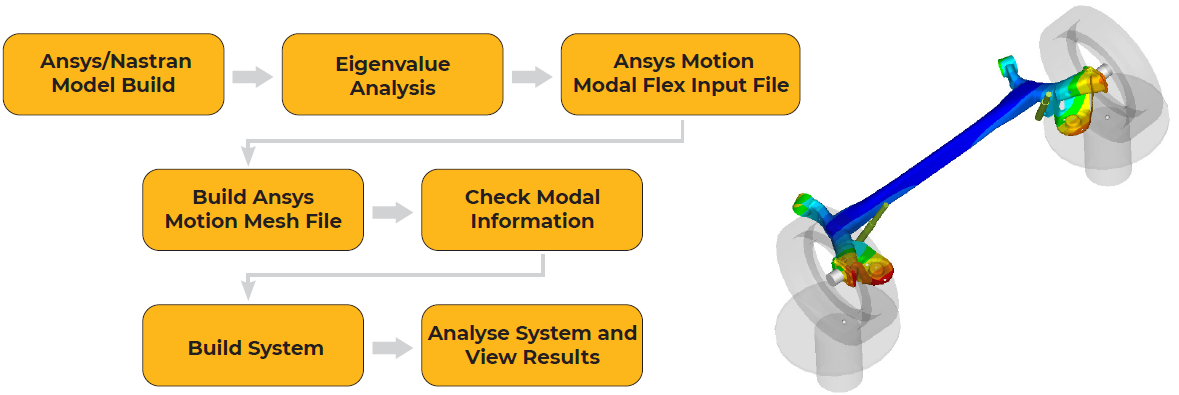
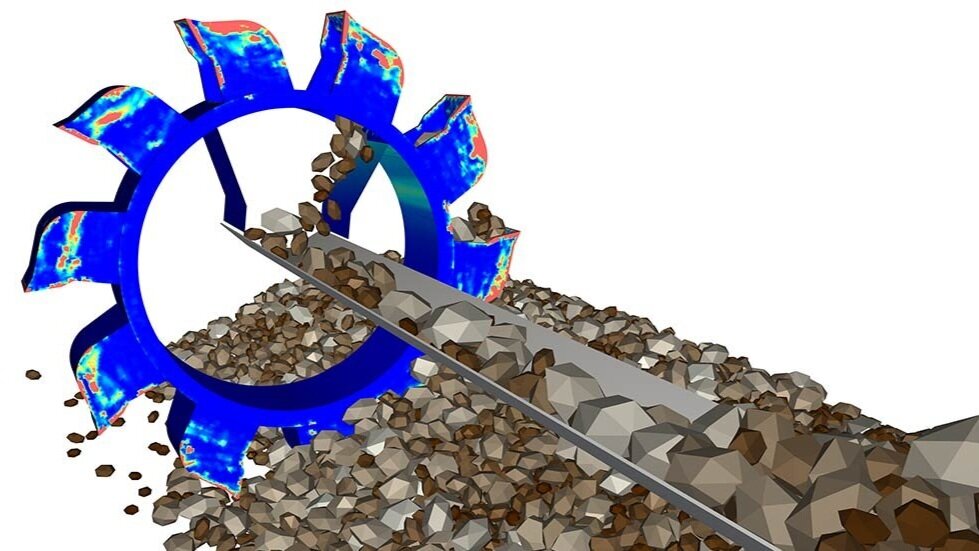
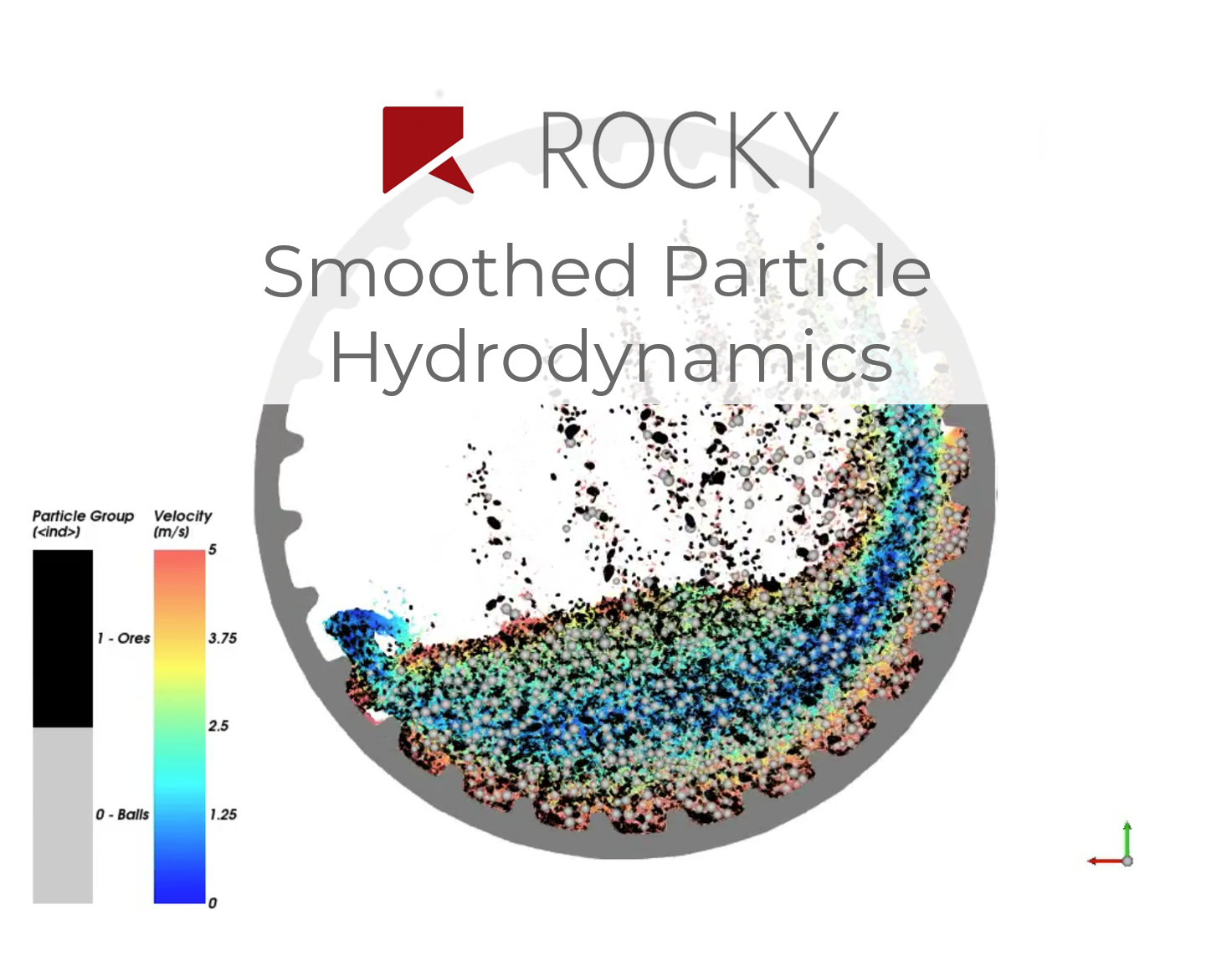
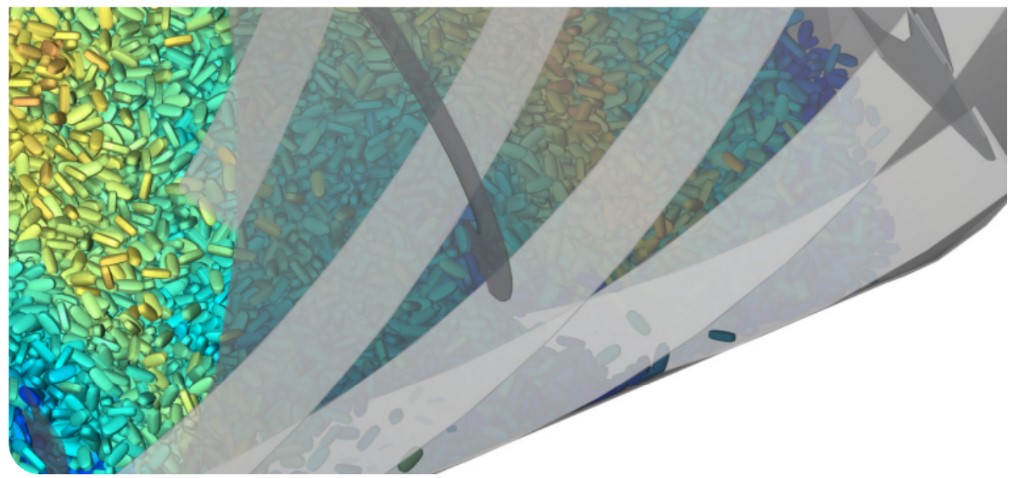
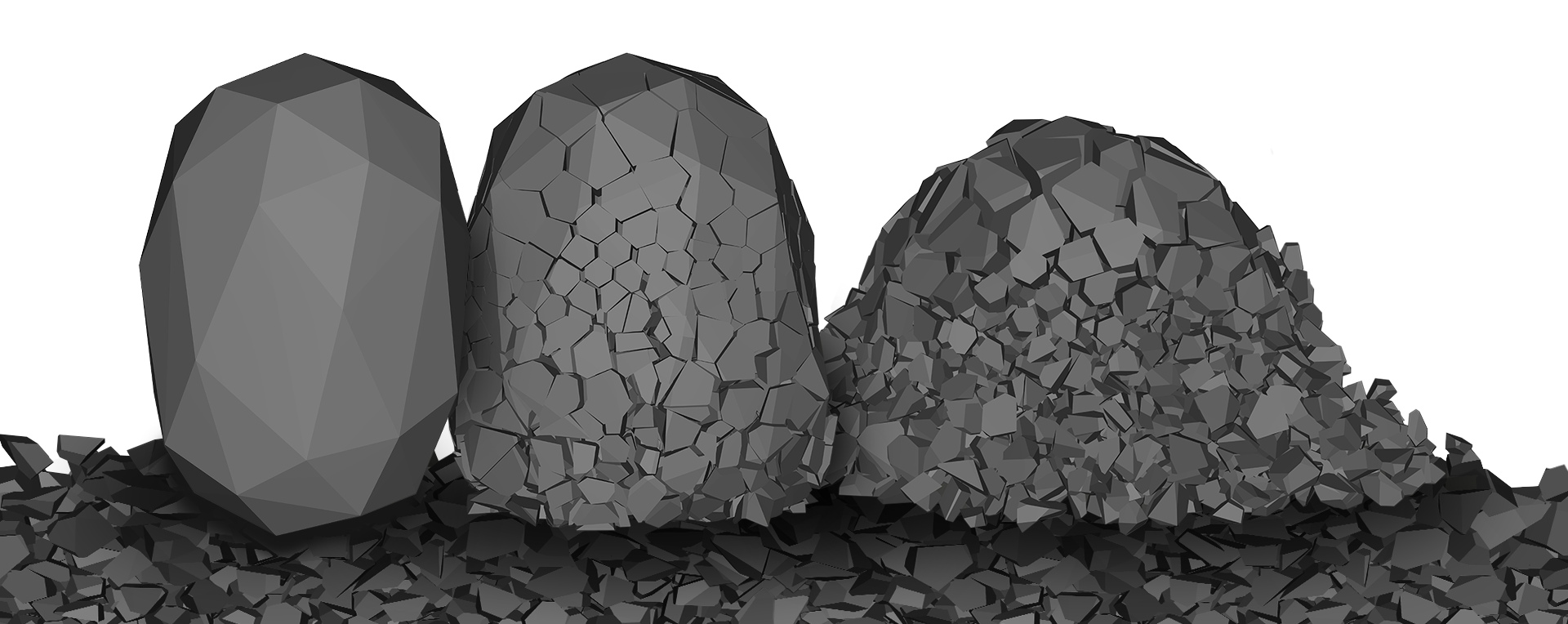
Ansys Rocky DEM has the right breaking model for you, regardless of the particle shape or the application being studied. The original particle’s mass and volume can be preserved in all models.
The Ab-T10 and Tavares models enable the simulation of brittle fracture of hard materials, resulting in fragments of arbitrarily formed, with smaller fragments being generated closer to the impact point. Additionally, it views each particle as a separate entity.
This allows a single entity to instantly break into fragments depending on the breakage force and/or energy levels defined.
Both the fracture subdivision technique, and the breakage energy probability function used by Ansys Rocky DEM are based on well-known models in the field. Including, JKMRC Ab-T10. This breakage model may conserve both mass and volume during the breakage process. In addition, the modeling uses convex polyhedrons of any shape.
The DEM initial Ab-T10 breakage model is expanded upon by the Tavares breakage model. It has undergone extensive single-particle testing by third-parties for validation. Moreover, the outcomes have been published in numerous peer-reviewed journals over the past 20 years.
This model focuses on low-energy stress-induced fracture. Crucially, aiding in simulation for a number of unit activities in the processing and handling of particulate materials. Particularly, where particles are frequently subject to a complicated series of loading events.
According to Tavares’ breakage model, a particle will eventually fracture under forces. More specifically, forces that are substantially lower than what would be needed for breakage in a first event.
Additionally, Rocky’s distinct discrete breakage model captures shape-dependent breakage and crack propagation. Achieved, by taking into account the location of the collision at the particle’s surface and the resulting internal stresses.
Moreover, Ansys Rocky DEM and its applications are vital in several pharmaceutical unit processes. Including, tablet coating, powder mixing, blending, drying, and general chemical transformation, transduction, and conjugation.
Rocky employs tetrahedrons as opposed to the majority of DEM programs, which combine a number of connected spheres to approximate a particle shape.
That is, while retaining volume and mass. Fibers, shells, and specially formed particles can all experience breakage in this manner, regardless of their shape or aspect ratio.